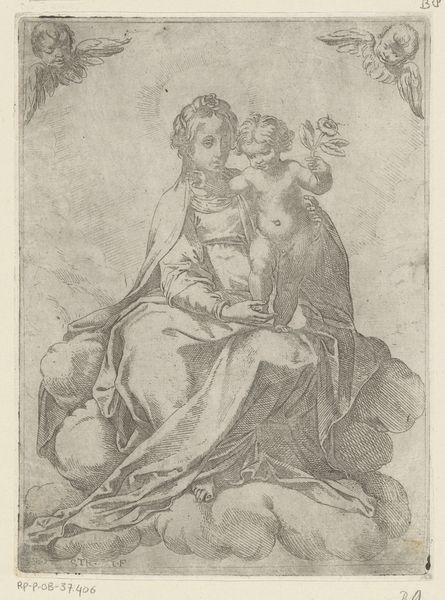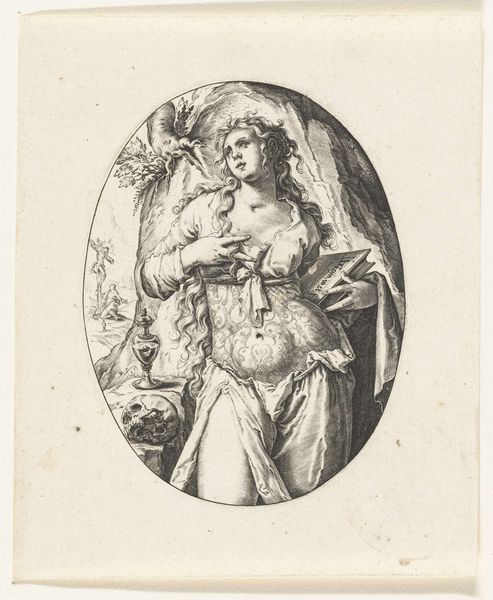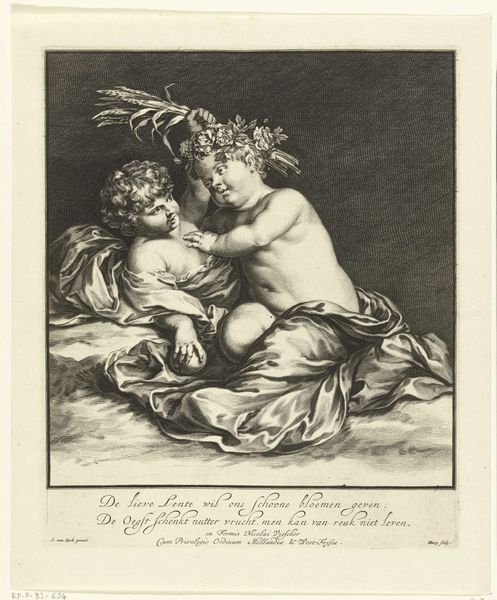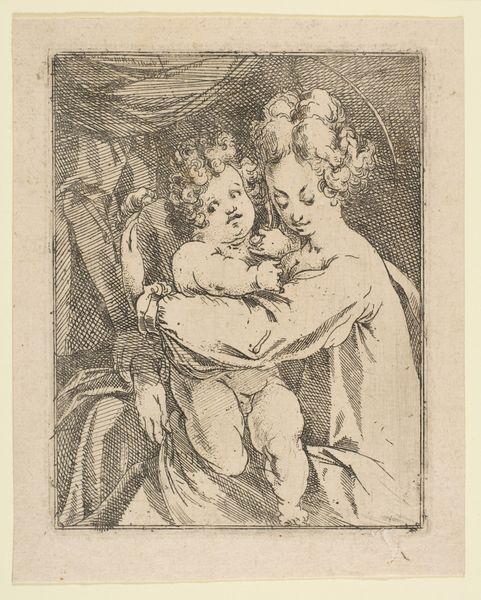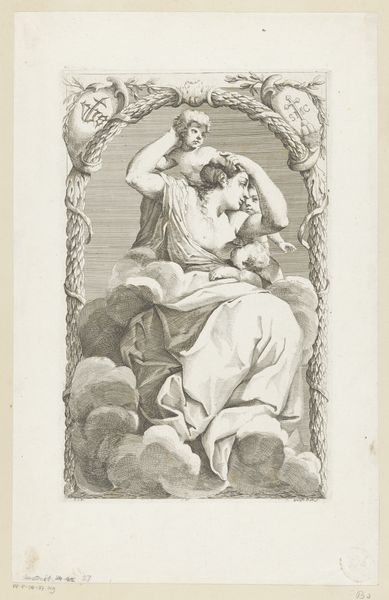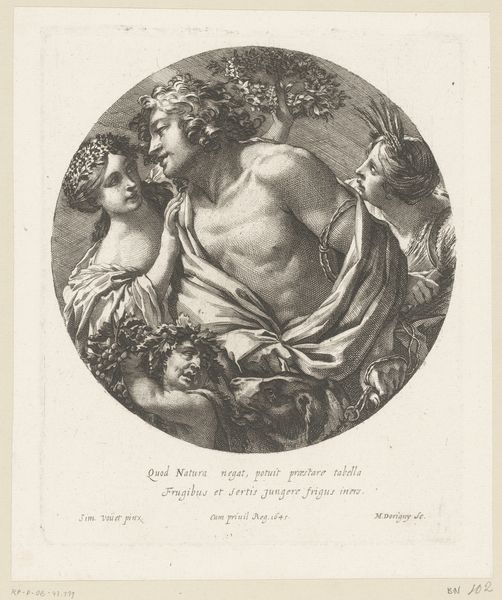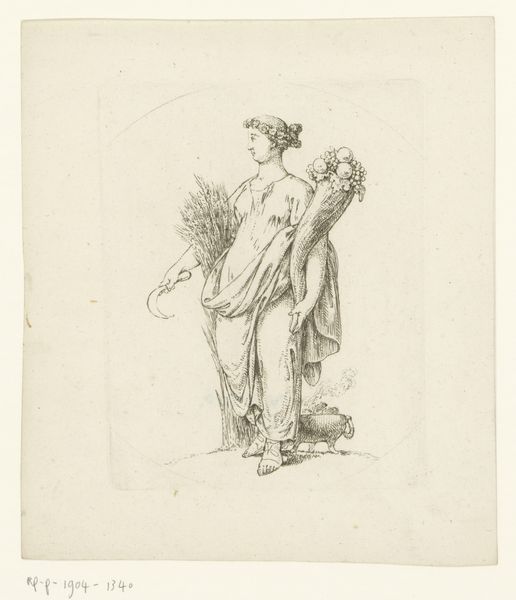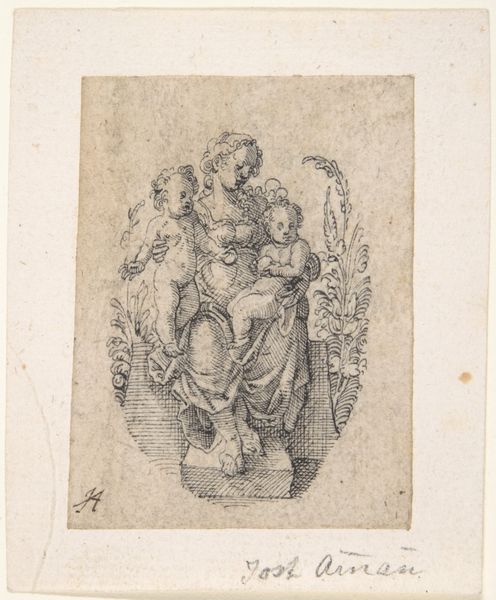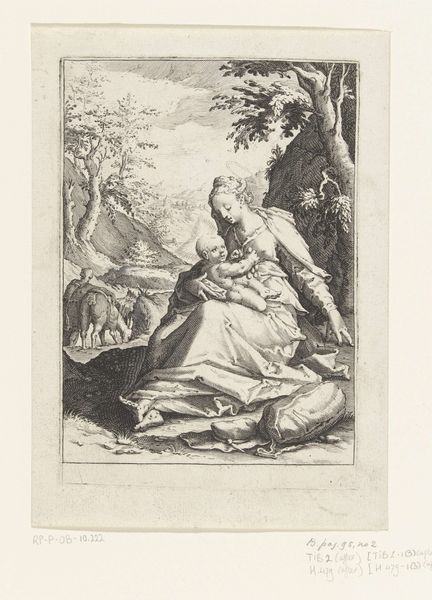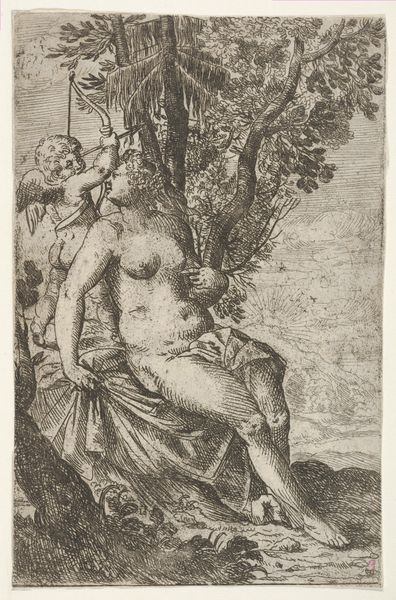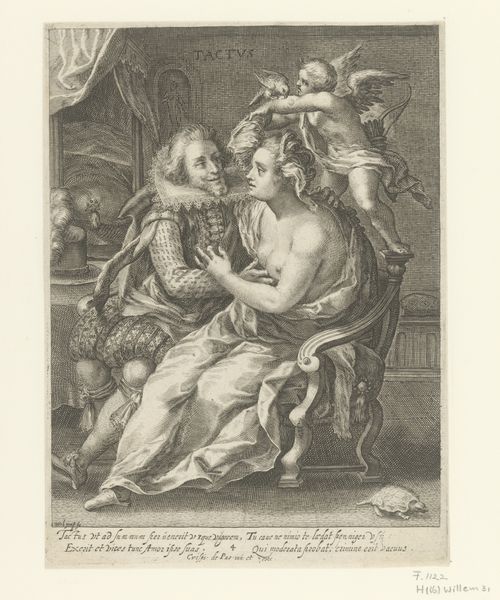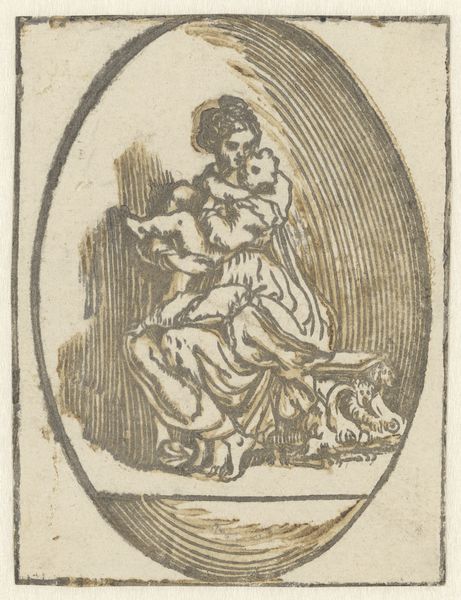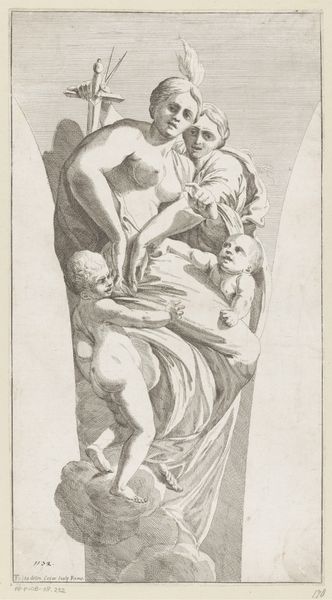
drawing, print, etching
#
portrait
#
drawing
#
baroque
# print
#
etching
#
figuration
#
line
#
history-painting
#
italian-renaissance
Dimensions: Plate: 6 1/8 × 4 15/16 in. (15.6 × 12.6 cm) Sheet: 6 9/16 × 5 3/8 in. (16.6 × 13.7 cm)
Copyright: Public Domain
Curator: Looking at this etching from somewhere between 1636 and 1646, we see Stefano della Bella's rendering of The Virgin and Child. Editor: There's an incredible intimacy here, even through the medium of printmaking. The way they are nestled together feels incredibly tender and safe. Curator: Indeed. Della Bella’s etching exemplifies the flourishing of print culture during the Italian Renaissance and its aftermath, allowing for widespread distribution of religious iconography. The image itself reinforces the Catholic Church’s renewed emphasis on the Virgin Mary, particularly as a nurturing mother figure. Editor: It’s interesting that you say “reinforces.” To me, the artist seems genuinely drawn to the pure affection—that almost electric touch. There's something about the halos here—much more about feeling than faith. Is that crazy? Curator: Not at all. While devotional, images like these functioned in a world of patronage, production, and dissemination—factors all affecting its emotional resonance, I'd argue. For instance, the inscription 'Cum privilegio Regis’ reflects how printmaking operated under royal sanction. Editor: So, the King approved of motherly tenderness! All that formality almost fades into the background, though. Curator: Perhaps. Della Bella masterfully uses the etching technique to capture fine details and subtle gradations of light, softening forms and thereby enhancing its emotional impact. Editor: Exactly! That delicate interplay creates such an intimate moment; it's amazing that it can feel so intimate. Even after potentially mass distribution and royal approval, all the possible historical layers somehow just elevate that very sweet connection, you know? Curator: It speaks to the ability of artists like Della Bella to transform political and religious motifs into objects of lasting emotional significance, I would argue. Editor: Well, there you have it! What at first glance looks reverent may have multiple facets. Curator: Agreed. The complexities surrounding the image, its context, its maker, give an etching such as this even greater nuance.
Comments
No comments
Be the first to comment and join the conversation on the ultimate creative platform.
